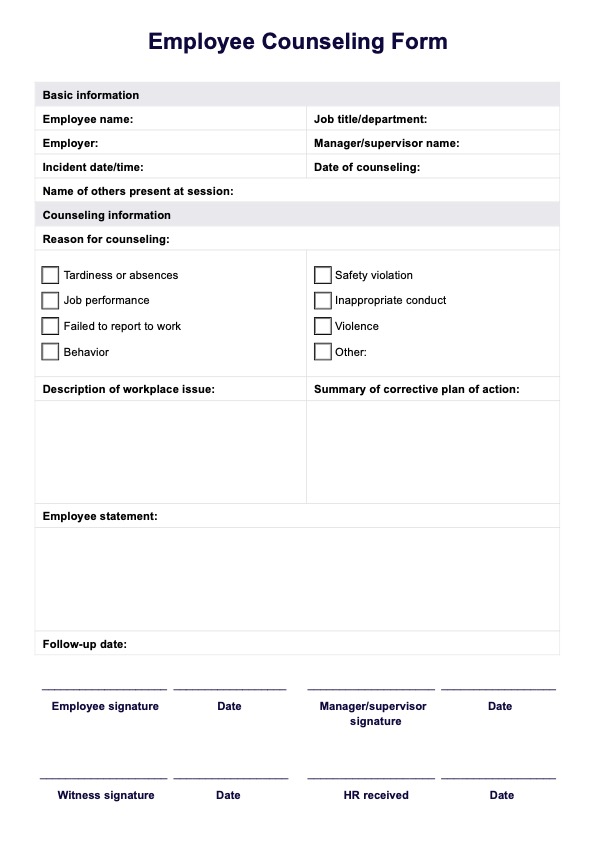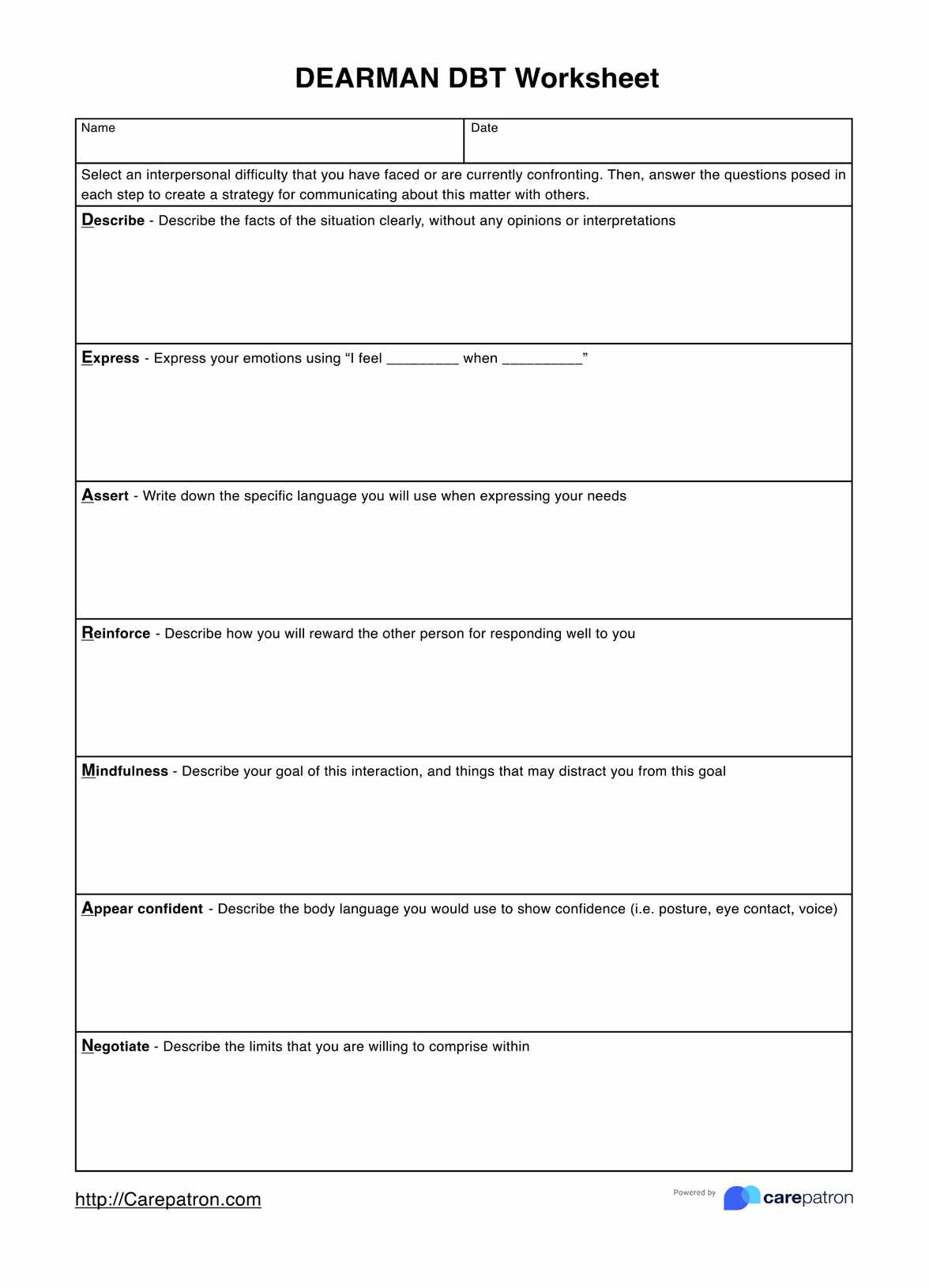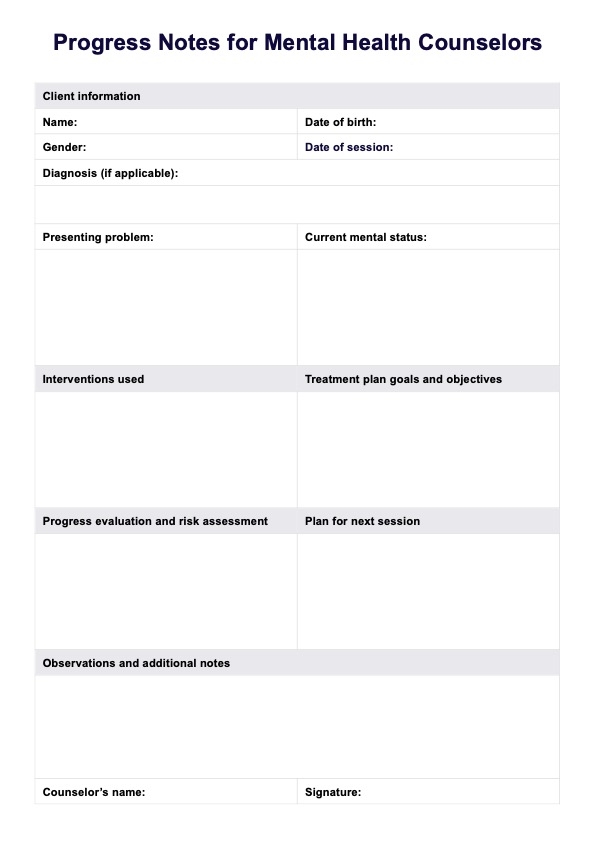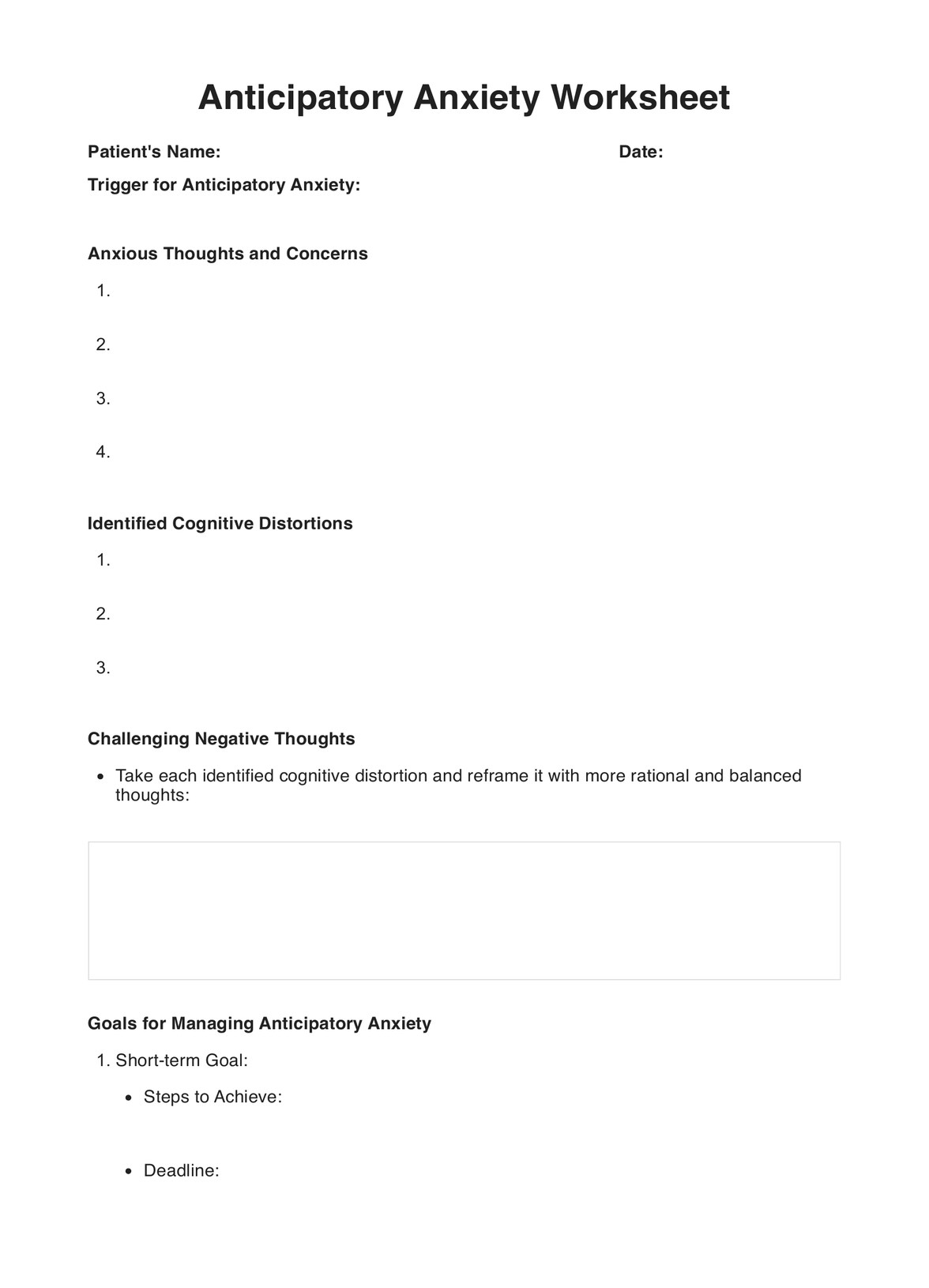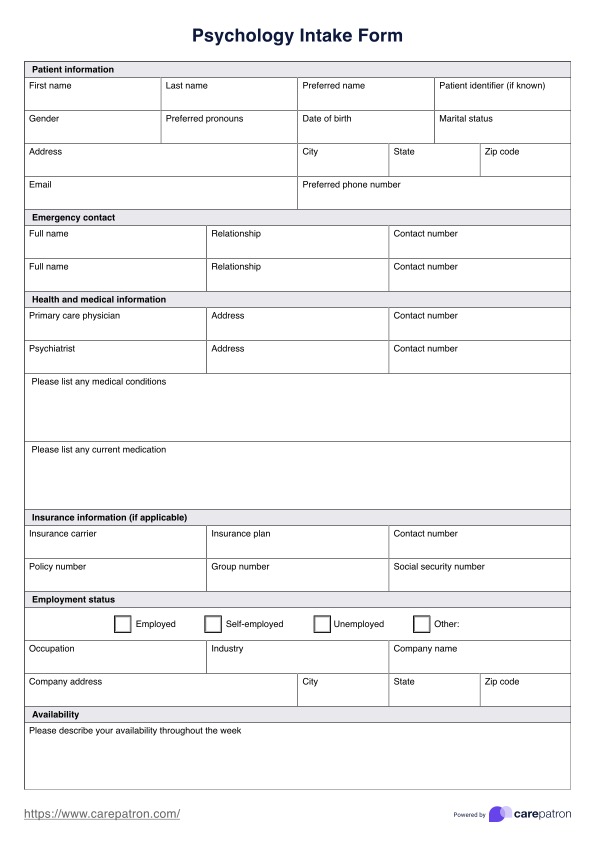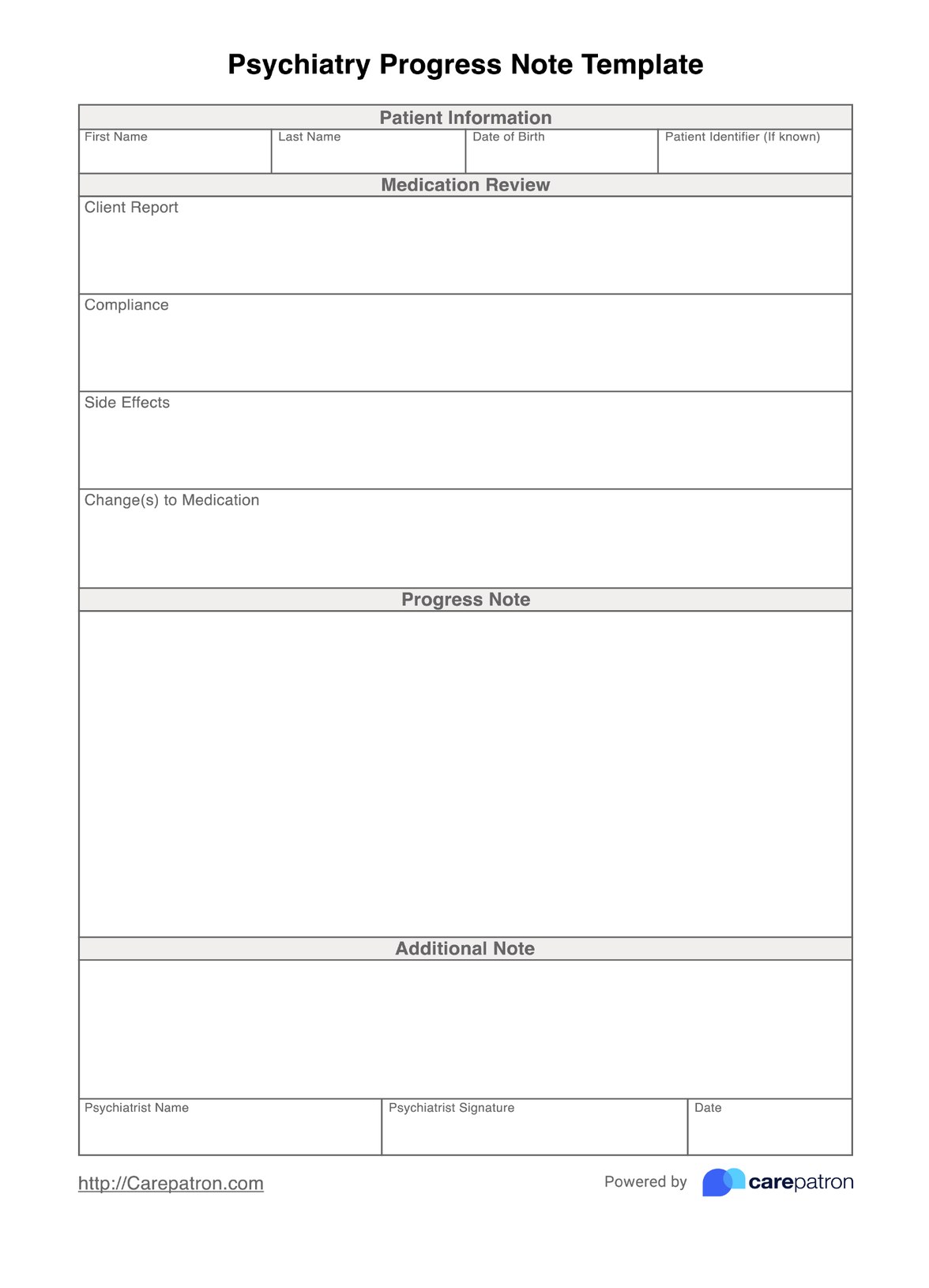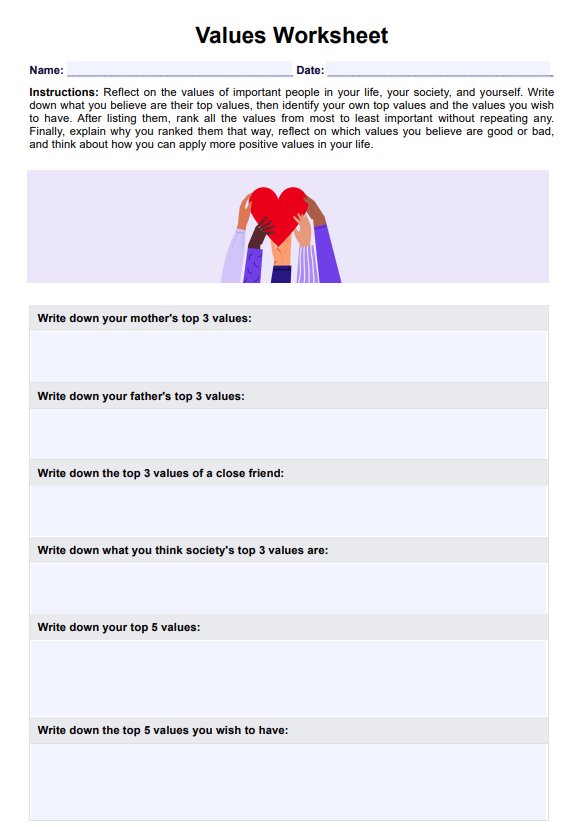Behavioral Activation Worksheets
Implement this weekly behavioral activation worksheet and motivate your clients to improve their behavioral patterns, strengthen relationships, and achieve desired outcomes.


What is a Behavioral Activation Worksheet?
Behavioral activation is a form of therapeutic treatment that is often used to help patients manage their mental health. Behavioral activation is usually a part of cognitive behavioral therapy, however, it can also be used as a treatment method by itself. At its most essential, behavioral activation uses behaviors to influence and/or alter a client’s emotional states. Much of the time, behavioral activation is used to treat patients who are experiencing depression symptoms, as this treatment method encourages them to re-engage with behaviors that can ease depression. The types of behaviors that a patient engages in will differ depending on the issues they are facing and their desired clinical outcomes, but these may be related to improving enjoyment, reducing unpleasant experiences, or focusing on strengthening relationships.
One of the best ways to encourage patients to engage in positive behaviors is to get them to brainstorm and visualize what these behaviors may be. As such, we’ve designed a to be completed by patients. The worksheet is structured as a table and is designed to be filled in weekly, generating short-term and achievable goals for the patient. In this guide, we’ll introduce you to our worksheet, show you how it can be accessed, and outline some of the various benefits associated with using it. Let’s get started!
Behavioral Activation Worksheets Template
Behavioral Activation Worksheets Example
How To Use This Worksheet For Behavioral Activation
Fortunately, accessing, implementing, and using this worksheet follows a simple process. Some of these steps may seem self-explanatory but check out this guide to observe how you can quickly and easily utilize our worksheet.
Step One: Access the worksheet
Naturally, step one is to access and save the worksheet. We’ve included a link to the PDF template a little further down this page (next to a behavioral activation worksheet example), and clicking on this will open the worksheet on your device. From here, you can either edit the resource directly or download and save it onto your device.
Step Two: Give the worksheet to patients to complete
When you are treating a patient who you think will benefit from using the behavioral activation worksheet, you should give them a copy of the resource. There are a couple of options for how to do this. You can either give them a physical copy or if you’d prefer to keep things paperless, you can send them a link to an electronic version. Further, if you think your patient may find it difficult to complete the table by themselves, then feel free to do it together.
Step Three: Patient to complete the worksheet
The behavioral activation worksheet is structured as a weekly table, separated into morning, afternoon, and evening. Although we would encourage patients to write a response to each of the table’s boxes, you may decide to start more slowly and only fill out one behavior per day. Regardless of how you approach this process, it is recommended that your patient gives you a copy of the completed worksheet, so you can assess whether their goal behaviors are achievable.
Step Four: Assess the patient’s progress
After the behavioral worksheet has been completed, the process isn’t quite complete. Ensure you store the worksheet in a HIPAA-compliant and accessible way, so you can assess whether the patient has engaged in the planned behaviors. This will allow you to track the patient’s progress, as well as determine whether there are any specific areas that may require a bit more improvement or focus.
Who Can Use this Printable Behavioral Activation Worksheet (PDF)?
This behavioral activation worksheet has been designed to be used by a broad range of different therapists and patients. As we mentioned, it is frequently used as a part of CBT (cognitive behavioral therapy). This type of therapeutic treatment may be used to treat patients who are experiencing the following disorders and challenges:
- Depression
- Anxiety
- Addiction
- Post-Traumatic Stress Disorder
- Divorce and/or Relationship Issues
- Financial Stress
- Loneliness and Isolation
Why Is This Form Useful For Therapists?
Implementing this worksheet into your therapeutic practice will have lots of uses – not just for your patients, but also for you. Some of these include:
Pre-formatted resource
Using a worksheet that has already been formatted and structured will save you a lot of time. Instead of having to spend time organizing a worksheet for your patients, you simply have to access the one we have already structured and distribute this to your patients. We have ensured that the template is as intuitive and easy to use as possible, so the process of completing it will be simple for your patients as well.
Improves organization
Our worksheet can be accessed, shared, and completed entirely online, negating the need to look after a collection of physical copies. This will automate the process of completing the worksheet, making it less time-consuming for both you and your patients.
Informs session plans
The responses that your patient includes on the worksheet will help inform your session plans. You can use them as a discussion point, as well as to track the progress of your patient and determine whether or not they have achieved their weekly goals.

Benefits of Behavioral Activation Worksheet Template
Some of the benefits associated with implementing this behavioral activation worksheet template include:
Patients can visualize and work toward short-term goals
The behavioral activation worksheet is centered around encouraging patients to visualize weekly behavioral goals. The table asks patients to devise specific goals for every day of the week, giving them a short-term objective to aim towards. Giving patients autonomy to develop these goals themselves will help ensure they remain self-motivated and engaged in their own treatment.
Track patient progress
During your sessions with patients, you can go over their responses on the worksheet and ask them whether or not they achieved their weekly goals. It’s important to celebrate even the smallest achievements during therapeutic treatment, and this process will also allow you to observe any areas where the patient may want to focus more heavily.
Structure treatment
Organizing and planning treatment and session plans is a critical (yet time-consuming) component of working as a therapist. Although it isn’t a complete replacement, this behavioral worksheet will provide additional and useful information regarding what you may focus on during your next session with a patient. For example, if many of their goals are targeted toward increasing social interactions, then this may be an area of interest for you to discuss.
Overcome negative behavioral and/or emotional patterns
In addition to improving positive behavioral and emotional patterns, behavioral activation is effective at reducing negative behavioral and emotional patterns. This is particularly useful for treating patients who are attempting to overcome addictions. With this worksheet, you will be able to encourage your patients to eliminate any negative behavioral patterns in their life and instead focus on engaging in positive behaviors and emotions.
Achieve desired outcomes
Our behavioral activation worksheet keeps patients focused on achieving short-term weekly goals, encouraging them to continuously work toward desired clinical outcomes. Prioritizing a collaborative approach to care, this worksheet is effective in achieving positive clinical outcomes.
Commonly asked questions
When you use a behavioral activation worksheet is entirely up to your professional opinion and the needs of your patient. If you specialize in CBT then you may find yourself using this worksheet more frequently, however, behavioral activation therapy is also effective as a standalone treatment method. We recommend encouraging your patients to complete the worksheet prior to the week in question, so they can use it as a motivator throughout the week.
The behavioral activation worksheet can be completed in a couple of different ways, depending on the patient in question. You may find that your patient is capable of achieving 4-5 behaviors per week, or that the full 3 behaviors per day are suitable. We would also recommend encouraging your patients to target a range of different behaviors, including social, familial, professional, and personal.
The behavioral activation worksheet has been designed to be completed primarily by the patient. This is so that the behaviors and answers included should be as genuine, honest, and unique to the patient as possible. With that being said, you may find it more productive to complete the worksheet with your patient, so they can devise achievable and useful goals.

.jpg)
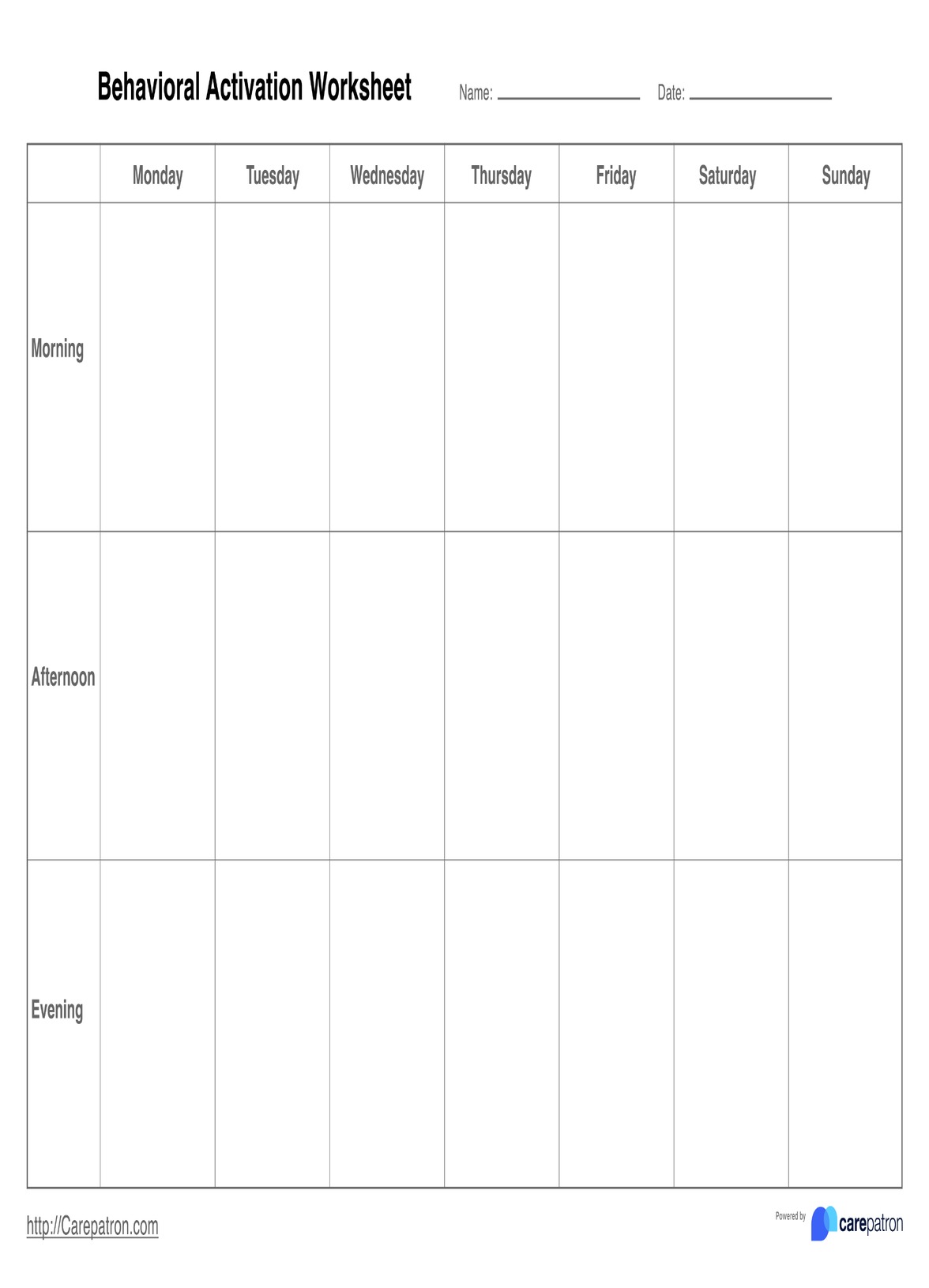
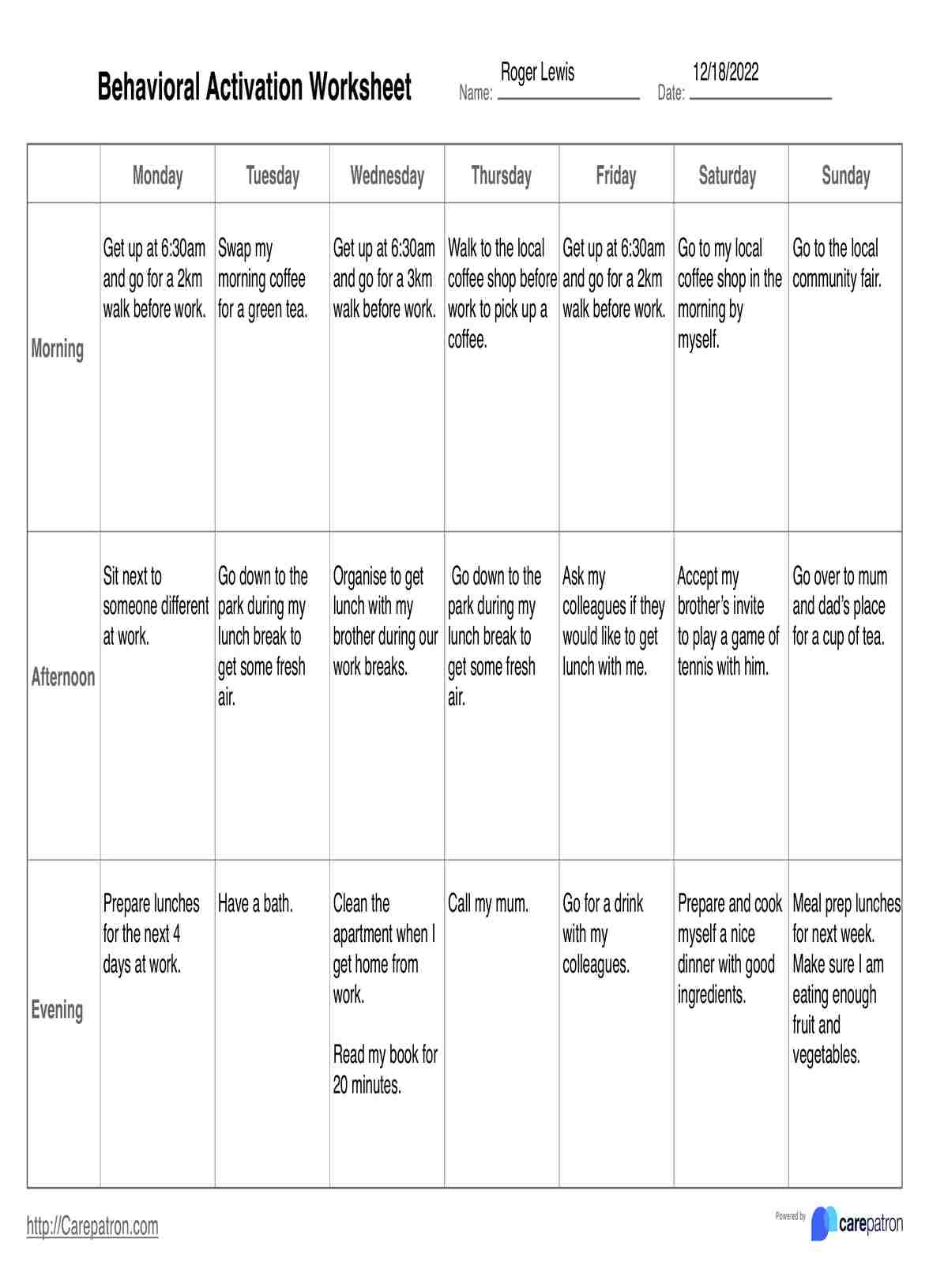















-template.jpg)





















































































